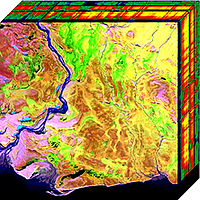
Photo from wikipedia
Visible and infrared image fusion (VIF) has attracted a lot of interest in recent years due to its application in many tasks, such as object detection, object tracking, scene segmentation,… Click to show full abstract
Visible and infrared image fusion (VIF) has attracted a lot of interest in recent years due to its application in many tasks, such as object detection, object tracking, scene segmentation, and crowd counting. In addition to conventional VIF methods, an increasing number of deep learning-based VIF methods have been proposed in the last five years. Different types of methods, such as CNN-based, autoencoder-based, GAN-based, and transformer-based methods, have been proposed. Deep learning-based methods have undoubtedly become dominant methods for the VIF task. However, while much progress has been made, the field will benefit from a systematic review of these deep learning-based methods. In this paper we present a comprehensive review of deep learning-based VIF methods. We discuss motivation, taxonomy, recent development characteristics, datasets, and performance evaluation methods in detail. We also discuss future prospects of the VIF field. This paper can serve as a reference for VIF researchers and those interested in entering this fast-developing field.
Journal Title: IEEE transactions on pattern analysis and machine intelligence
Year Published: 2023
Link to full text (if available)
Share on Social Media: Sign Up to like & get
recommendations!